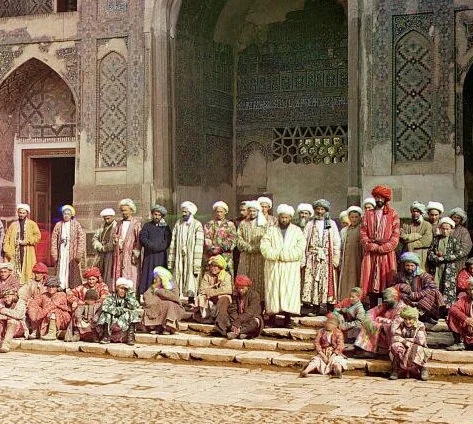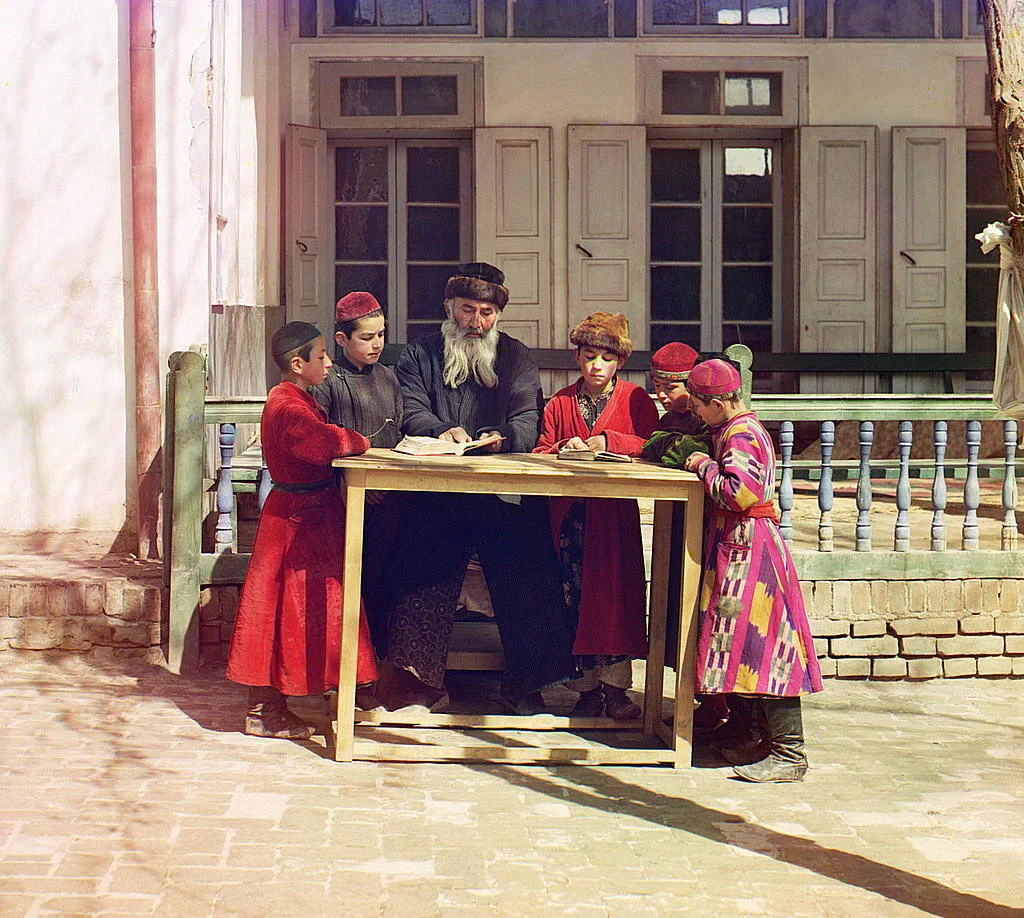Chapan, the Central Asian coat
Chapan is a coat worn over clothes and it is common in Central Asia. In the past, chapan was an indication of the social status. The higher the quality of silk and the numbers of layers worn as robes, the richer was considered the individual.
Governemnt officials would wear velvet or gold embroidered fabrics while wealthy merchants would wear adras, which is silk warp and cotton weft ikat. The lower classes would wear stripes pattern, called bekasam or floral patterns, called chit.
Below is a series of photographs taken in Uzbekistan at the beginning of the 20th century showing men wearing chapans. Some photographs have been digitally colored in the years 2000s, and highlight chapans’ bold colors against the backdrop of desert.
Bukhara Bureucrat, Bukhara. Taken between 1905-1915, digitally colored in 2005-2020. Original photo on the right.
Source: Prokudin-Gorski photograph collection, Library of Congress. Digital color rendering by Walt Frankhauser
Bukhara Bureucrat, Bukhara. Taken between 1905-1915.
Source: Prokudin-Gorski photograph collection, Library of Congress.
Profile of a Nomad, wearing an ikat robe. Taken between 1905-1915, digitally colored in 2005-2020. Original photo on the right.
Source: Prokudin-Gorski photograph collection, Library of Congress. Digital color rendering by Walt Frankhauser
Profile of a Nomad, wearing an ikat robe. Taken between 1905-1915.
Source: Prokudin-Gorski photograph collection, Library of Congress. Digital color rendering by Walt Frankhauser
From the Library of Congress, referring to the picture above: “Prokudin-Gorksii captures the traditional dress, jewelry, and hairstyle of an Uzbek woman standing on a richly decorated carpet at the entrance to a yurt, a portable tent used for housing by the nomadic peoples of Central Asia. After conquering Turkestan in the mid 1800s, the Russian government exerted strong pressure on the nomadic peoples to adopt a sedentary lifestyle and settle permanently in villages, towns, and cities”.
Men on the Registan, Samarkand. Taken between 1905-1915, digitally colored in 2005-2020. Original photo on the right.
Source: Prokudin-Gorski photograph collection, Library of Congress. Digital color rendering by Walt Frankhauser
Men on the Registan, Samarkand. Taken between 1905-1915.
Source: Prokudin-Gorski photograph collection, Library of Congress.
Jewish children with their teacher, Samarkand. Taken between 1905-1915, digitally colored in 2005-2020. Original photo on the right.
Source: Prokudin-Gorski photograph collection, Library of Congress. Digital color rendering by Walt Frankhauser
Jewish children with their teacher, Samarkand. Taken between 1905-1915, digitally colored in 2005-2020.
Source: Prokudin-Gorski photograph collection, Library of Congress. Digital color rendering by Walt Frankhauser
From the Library of Congress, referring to the picture above: “Samarkand, an ancient commercial, intellectual, and spiritual center on the Silk Road from Europe to China, developed a remarkably diverse population, including Tajiks, Persians, Uzbeks, Arabs, Jews, and Russians. Samarkand, and all of West Turkestan, was incorporated into the Russian Empire in the middle of the nineteenth century and has retained its ethnic diversity up to the present”








